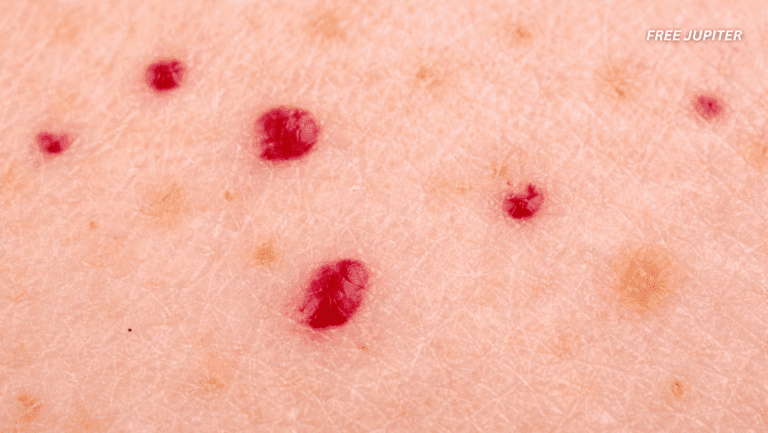Autism has always been a puzzle—beautifully complex, highly personal, and often misunderstood. For decades, scientists have tried to figure out what causes it, how it develops, and why it affects people so differently.
Now, a major breakthrough by researchers in Japan is offering a new way to look at autism—and it all comes down to something surprisingly simple: cleaning up.
Yes, cleaning up. But not the kind you do around the house. We’re talking about the brain’s built-in housekeeping system—an internal maintenance crew responsible for keeping brain cells tidy and functional.
And when this system fails, as researchers at Kobe University now believe happens in many cases of autism, the consequences may ripple through the entire nervous system.
Let’s dive into what they found, and why this discovery could change how we understand not just autism, but a range of neurological conditions.
🧠 The Brain’s Housekeeping Team: A Hidden Hero
Inside your brain, millions of cells called neurons are working nonstop. They’re like high-speed data centers—constantly sending messages, building connections, and updating their internal hardware. But all this activity produces waste: broken proteins, malfunctioning molecules, and outdated cellular parts.
Just like your laptop slows down if it gets clogged with junk files, your neurons get sluggish if they can’t clear out their waste. That’s where the brain’s clean-up system comes in.
This internal janitorial crew, made up of specialized molecular tools, ensures neurons stay in tip-top shape by recycling or discarding damaged components.
But what happens if this clean-up system goes offline?
That’s what the Kobe University researchers wanted to find out. Their goal was to investigate whether certain genetic mutations—those known to increase autism risk—were causing this brain-cleaning machinery to malfunction.
🔬 Engineering “Autism in a Dish”: A Lab-Based Breakthrough
The researchers didn’t just look at these genetic mutations under a microscope—they recreated them. Using a powerful gene-editing tool called CRISPR, the team introduced 63 different autism-linked mutations into mouse stem cells in the lab.
These stem cells have an incredible ability to grow into different types of tissues, including neurons.
By doing this, the scientists essentially grew miniature models of autistic brain tissue in a petri dish. This allowed them to observe how these specific mutations affect brain development, structure, and behavior—without needing to experiment on humans.
They even took it a step further and used these modified cells to grow mice that carried the same genetic variations. This gave them a rare chance to observe how these mutations impact brain function across a living organism’s lifetime.
Read more: The Reason More Adults Than Ever Are Being Diagnosed With Autism
🧩 The Missing Link: A Brain Jam Caused by Bad Protein Management
Across all the different mutations they studied, a common thread emerged: the brain’s clean-up system wasn’t working like it should. Specifically, neurons in these models were struggling to clear out old or broken proteins. This led to cellular clutter—think of it as digital lag in a very biological system.
This discovery is especially important because neurons rely heavily on localized protein production to function. Unlike many other cells, neurons build some of their internal components right at the tips of their long extensions, far from the cell’s center.
That means they need a very efficient way to manage what gets made, what’s broken, and what needs to be thrown out.
If that system breaks down, as it appears to do in many cases of autism, the result can be widespread brain network dysfunction—especially in areas responsible for language, learning, emotion, and social interaction.
🧠 Beyond Autism: Shared Roots With Other Disorders
Here’s where things get even more intriguing: some of these same genetic mutations also show up in people with schizophrenia and bipolar disorder. That means this study doesn’t just help us understand autism—it could help unravel the biological origins of multiple psychiatric and developmental conditions.
The researchers believe that their “mutation library” could serve as a reference for studying other brain disorders, giving scientists a powerful new tool to trace how specific genetic glitches alter brain behavior.
💡 From Risk Genes to Real Answers: Why This Study Matters
Until recently, most autism research has focused on identifying risk genes—those little stretches of DNA that seem to be more common in people with autism. But knowing which genes are involved doesn’t automatically explain how or why they lead to autistic traits.
What makes this study different is its focus on function. It doesn’t just say, “this gene is linked to autism.” It shows what that gene actually does inside the brain.
This represents a major step forward in autism research—a shift from identifying genetic risk to understanding the biological chain reaction that leads to real-world symptoms.
Read more: Signs of Depression May Be Found In Your Mouth: Study
📈 Autism by the Numbers: The Rapid Rise in Diagnoses
This discovery comes at a time when autism diagnoses are on a steep rise around the globe. In the UK, the number of diagnoses increased by a jaw-dropping 787% between 1998 and 2019. Meanwhile, in the U.S., the CDC reported that 1 in every 31 children under age 8 had autism in 2022. That’s a significant jump from 1 in 44 in 2018, and a dramatic leap from the 1 in 5,000 estimate back in the 1960s.
So what’s behind this surge?
Some of it likely comes from improved awareness and better diagnostic tools. But genetic and environmental factors may also be evolving—and this is exactly why studies like the one from Kobe University are so crucial right now.
🌿 Environmental Clues: It’s Not All in the Genes
Genes don’t tell the whole story. Environmental factors may also play a role in shaping the risk of autism, especially during pregnancy.
Take bisphenol A (BPA), for example. It’s a common chemical used in hard plastics and metal food linings. In 2023, researchers found that boys born to mothers with high levels of BPA in their urine during pregnancy were six times more likely to be diagnosed with autism by age 11. Even at age 2, these boys were already showing signs of autistic behavior.
BPA has been under fire for years. Sometimes called a “gender-bending” chemical, it’s known to disrupt hormones in both humans and animals. It’s even been linked to early puberty, infertility, and developmental issues in fish and frogs.
So while our DNA lays the foundation, it seems the environment helps paint the picture—sometimes in unexpected and deeply influential ways.
🧬 Autism as Identity vs. Autism as Illness
One of the most important things to understand about autism is that it’s not a one-size-fits-all condition. Some people view autism as a difference, not a disorder. For many, it’s a core part of who they are—something that shapes how they think, feel, and interact with the world in ways that are both challenging and uniquely brilliant.
Famous individuals like Greta Thunberg and Elon Musk have embraced their autism publicly, helping to reduce stigma and increase visibility. Many in the autistic community argue that the goal should be accommodation and acceptance, not treatment or cure.
This research doesn’t contradict that perspective. Instead, it opens the door to options. For individuals who want support with specific challenges—whether that’s communication, learning, or emotional regulation—future treatments might become more precise, more personalized, and more respectful of neurodiversity.
Read more: Several Psychiatric Disorders Share The Same Root Cause: New Study
🚀 What’s Next? Personalized Medicine on the Horizon
While we’re still years away from seeing clinical applications, the long-term potential of this research is huge. If we can understand how specific mutations cause particular symptoms, we might one day be able to create personalized treatments—targeted therapies designed to match a person’s exact genetic profile.
It’s like going from generic aspirin to a custom-built solution designed just for your brain. That’s the promise of precision medicine, and it’s becoming more real with every study like this one.
For now, researchers will keep building on this work—mapping more mutations, testing more compounds, and continuing to decode the intricacies of our most mysterious organ: the human brain.
In a Nutshell:
This isn’t just another study. It’s a step toward understanding autism at a cellular level—how the tiniest failures in brain maintenance might shape how we think, feel, and connect. While we still have much to learn, we’re finally starting to see the deeper mechanics behind autism. And that’s nothing short of extraordinary.










